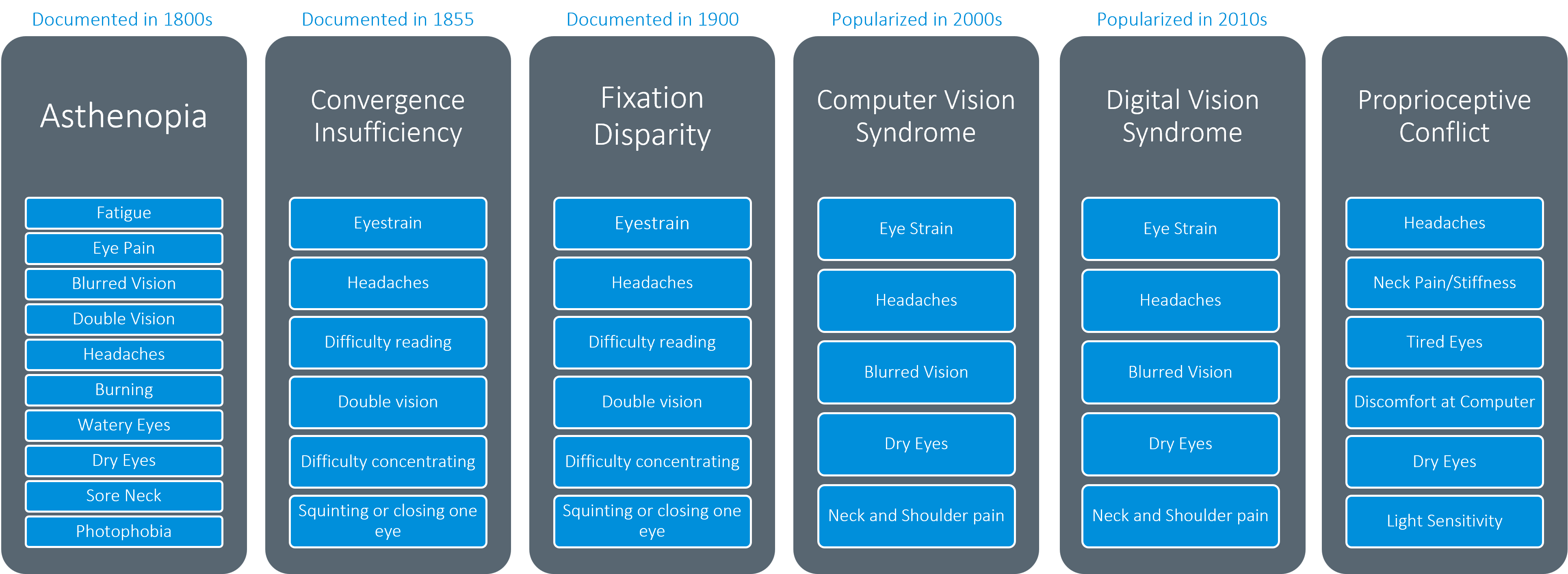.png)
Real Intelligence. Real Results.
When the underlying cause of Digital Vision Syndrome is binocular, you can't solve the problem without prism. Anything else is just artificial.
A 2022 study by The Vision Council reported that 80% of patients now experience these symptoms of Digital Vision Syndrome with some regularity. But what exactly is Digital Vision Syndrome? Since the phrase was initially coined (dovetailing out of the more specific "Computer Vision Syndrome" of the late 1990s), there has been speculation about the root cause: irregular pixel edges, blue light exposure, insufficient magnification power at near, and more.
But it turns out the Digital Vision Syndrome has already had a name all along, since the 1800s: asthenopia.

The more we learn about this growing symptomology, the more we learn about the underlying mechanism of action, which is binocular. Looking at things up close requires us to compensate for the distance between where our eyes naturally rest and where we need them to focus. Fusional reserves cover this compensation work for some period of time—which varies from person to person—but not for hours on end.
So how exactly does misalignment lead to symptoms? The answer lies in the trigeminal nerve—the largest nerve in the brain and the one responsible for most head, face, jaw and neck sensations. Importantly, proprioceptive information is sent to brain via the trigeminal nerve. When there is a proprioceptive mismatch between misaligned eyes and your vestibular and muscular systems, this creates a neural conflict and leads to an inaccurate gaze response. This inaccurate response is continuously fed back to the visual system, which ultimately leads to the overstimulation of the trigeminal nerve. This overstimulation leads to a painful stimulation of several parts of the face and neck.
Does filtering blue light address the symptomology? No. Do behavioral changes like the ubiquitous "20-20-20 rule" address the symptomology? No. And while they can certainly improve a patient's visual clarity, "powerboost" lenses or more advanced progressive lens designs that purport to be made for digital viewing also don't address the symptomology. Why? Because they don't address the underlying binocular issues.
Patients need more help at near, so Neurolenses incorporate a contoured prism into the lens. And multiple studies have found that even small amounts of prism have a profound impact on a patient’s visual clarity and comfort. In fact, Neurolenses consistently offer relief in the 80-90% range, depending on symptom. Imagine the impact this level of relief has on a patient. And they’re risk free with a lifetime satisfaction guarantee. But these lenses work so well for so many people that the national return rate is less than 3%.
Don't fall for artificial solutions to real problems. Address the root issue, and recommend visual solutions that address visual clarity and comfort appropriately.

Neurolens Marketing
Nearly 2/3 of adults experience the painful symptoms of eye misalignment, including chronic headaches, neck pain, eye strain and dry eye sensation. Fortunately, relief is in sight with Neurolenses, which go beyond visual acuity to restore naturally comfortable vision.


.png)
.png)
.png)
.png)

